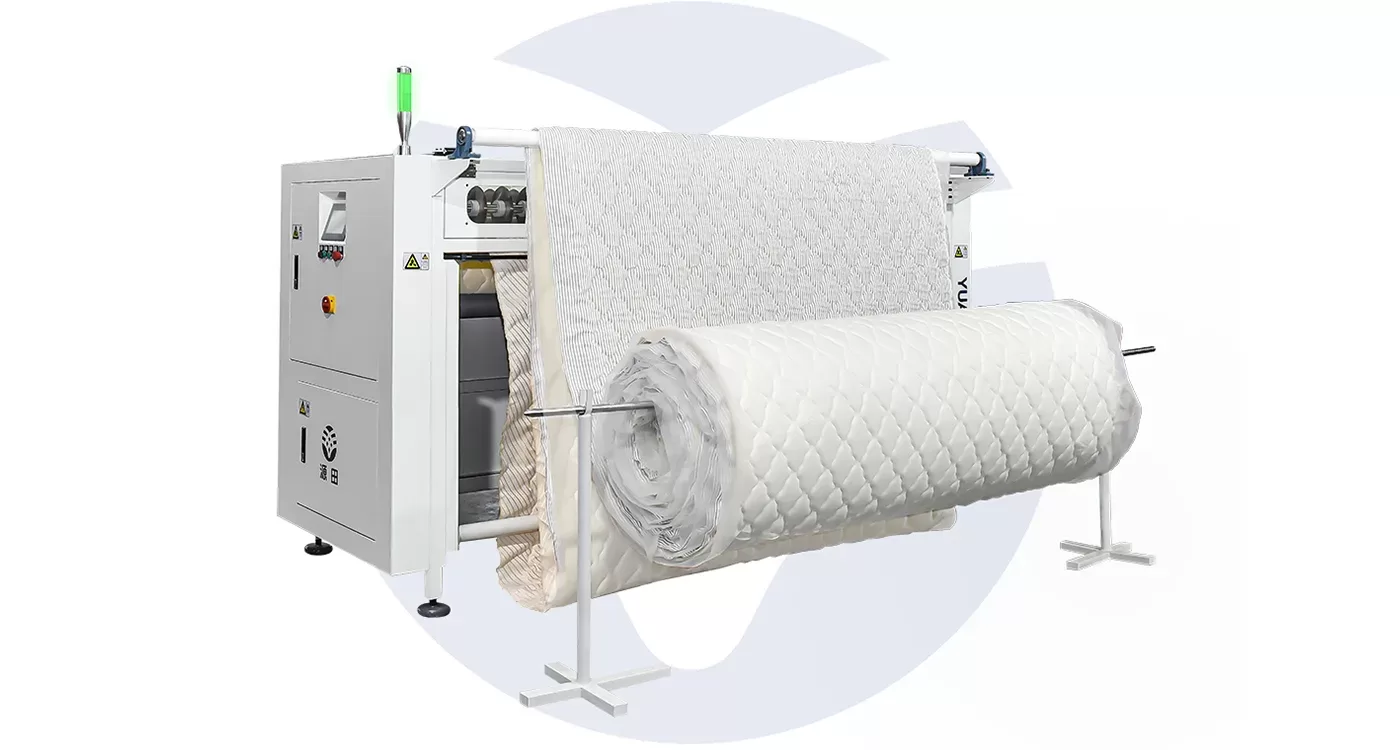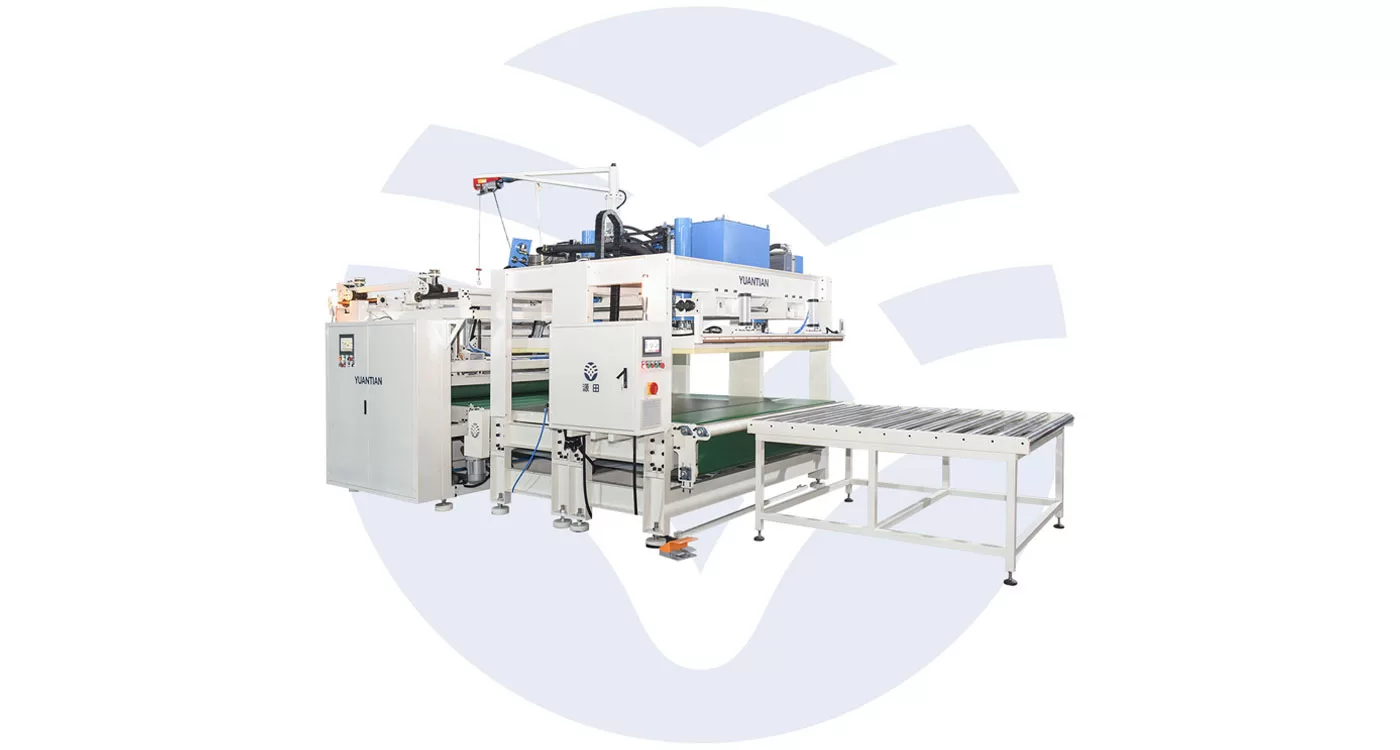- Home » Understanding the Components of Modern Mattress Machinery
Modern mattress machinery plays an important role in the mattress industry because of the increasing demand for high-quality, comfortable mattresses. From the crafting of individual components to the final assembly, modern mattress production enjoys an up-to-date line-up of machines combining precision, efficiency, and innovation.
This article discusses the crucial elements that comprise modern mattress machinery and explains how these technologies make the process seamless.
Cutting and Shaping Machinery
Manufacturing mattresses always starts with the cutting and shaping of raw materials. These machines are designed to precisely handle a variety of materials: foam, latex, fabrics, and so on. Among the broad spectrum of cutting technologies, widely spread are:
CNC (Computer Numerical Control) Cutters: These computerized machines cut out the foam into shapes and sizes using computer-designed files, thus providing consistency in production, reducing waste, and enabling intricate designs such as contoured edges or zoned support layers.
Die Cutting Machines: Used when mass production is required, these machines will have sharp blades that can cut several layers of fabric or foam at one time, which will speed up the process without compromising quality.
Laser Cutting Systems: While laser cutters are less common in the manufacturing of mattresses, they are used for materials that need ultra-fine detailing or cuts of a peculiar type.
This enables manufacturers to create custom-designed mattresses to meet a wide range of consumer needs, from traditional rectangular beds to specialty shapes for RVs or medical purposes.

Quilting Machines
Quilting is the most important part of mattress production, as it joins the fabric layers with padding to form the upper layer of the mattress, therefore creating the comfort and aesthetics of the mattress. Modern quilting machines possess advanced features aimed at intricate patterns in stitching. Key types:
Multi-Needle Quilting Machines: These machines are used to stitch intricate patterns with multiple needles at the same time, greatly reducing the production time. They can take thick materials without any difficulties and produce strong, good-looking quilts.
Computerized Quilting Systems: These directed by software have a high degree of precision and provide a big advantage to manufacturers in designing and implementing customized patterns quickly.
Chain-Stitch Quilters: These machines produce interlocking stitches that enhance the strength and longevity of the mattress cover.
These machines not only enhance production speed but also allow producers the scope to try creative designs, giving mattresses a high-class look.
Foam and Spring Assembly Equipment
The foundation of most mattresses is basically made up of layers of foam, springs, or a combination of both. Specialized machinery assembles these components together to form the bed base and foundation of the mattress.
Foam Layering Machines: These machines glue multiple layers of foam together to achieve the desired thickness and firmness; some models come equipped with robotic arms that place the layers with precision and in perfect alignment.
Spring Coil Manufacturing Machines: Innerspring mattresses use coils manufactured by machines that twist and shape steel wire into spring configurations. These include pocketed coils (each individually wrapped to create motion isolation) and open coils (connected for uniform support).
Adhesive Applicators: They bond layers of foam to spring systems in hybrid mattresses. These engineering systems apply the exact amount of adhesive material necessary to achieve solid bonds without excess application.
These machines make it easier for manufacturers to construct cores to fulfill the needs of all consumers, whether they prefer their mattresses firm and orthopedic or soft and plush.
Edge Support and Border Machinery
Edge support is a crucial feature in mattresses, as it prevents sagging and enhances durability. Modern edge support and border machinery focus on reinforcing mattress perimeters.
Tape Edge Machines: These machines attach binding tape to the mattress edges, ensuring a neat and durable finish. Some models are fully automated, while others require operator assistance for certain steps.
Border Welding Machines: These machines are used to attach parts together securely in mattresses that have a metal or hybrid frame.
Foam Encapsulation Machines: These machines cut, shape, and glue the foam around mattress edges. Generally speaking, high-end mattresses have foam-encased edges that provide much better comfort and durability.
Efficient machinery of edge support will keep the mattress in its original shape and functionality for a long period of time, even in normal usage.
Fabric Handling and Sewing Systems
Fabric handling remains a touchy aspect of mattress manufacture. It requires preciseness to avoid wrinkles, dislocations, or other defects. Only sophisticated sewing systems can undertake this vital process.
Automatic Fabric Feeders: These systems align and stretch fabrics to ensure smooth sewing without bunching, so each mattress has a consistent look.
High-Speed Sewing Machines: These are designed for heavy-duty sewing, stitching mattress covers, side panels, and borders quickly and precisely with no compromise on quality.
Zipper Installation Machines: The zipper machines ensure that zippers are properly mounted on mattresses with removable covers for the convenience of consumers who value hygiene.
Automation in fabric handling and sewing improves the quality and aesthetic appeal of the final product, while the duration taken to produce them is also optimized.
Vacuum and Compression Packaging Machines
With the growth in e-commerce, mattress manufacturing wholly depends on vacuum and compression packaging machines. Such machines reduce the mattresses to compact sizes that are easy to ship.
Vacuum Sealers: These systems remove air from the mattress packaging, reducing the size considerably. This technology is very crucial for memory foam mattresses that can be compressed without losing shape or support.
Roll-Pack Machines: After compression, mattresses are rolled and enveloped in protective film. Roll-pack machines provide automation for this process so that the packaging can be perfectly secure and uniform.
Heat Shrink Machines: This machine wraps the compressed mattress with a heat-sealed layer of plastic for extra protection during shipment.
Compression and packaging technology has given a new dimension to the manufacturers by cutting down shipping costs and further expanding their market.

Quality Control and Testing Equipment
The control of the quality of mattress production means the compliance of products with safety and functioning standards. Every feature is tested with special equipment.
Durability Testers: These machines emulate years of usage through continuous superior compression on the mattress. This test helps to study how well the mattress will hold up over time.
Firmness Measurement Devices: These systems measure the firmness level of a mattress to see if it is as stated in the advertisements.
Thermal imaging systems: Mostly used in foam mattresses, thermal imaging systems detect anomalies or voids in the foam layers.
Flammability Testing Equipment: Safety standards compliance is very important. Flammability testers ensure the materials used within the mattresses are able to inhibit fire hazards.
Advanced quality control machinery helps build consumer trust by ensuring that each and every mattress is made to the highest possible standard, both in safety and comfort, and will be long-lasting.
Conclusion
Modern mattress machinery plays a pivotal role in creating the high-quality products that consumers expect. From precision cutting and quilting to efficient packaging and quality control, these machines ensure that each step of the production process is seamless and efficient.
By investing in advanced machinery, mattress manufacturers can achieve higher productivity, better product quality, and greater customer satisfaction. As technology continues to evolve, the future of mattress manufacturing promises even more exciting advancements.
Связанные с ними товары

















